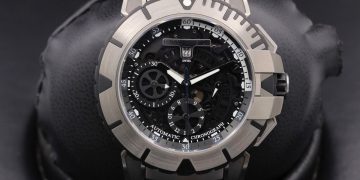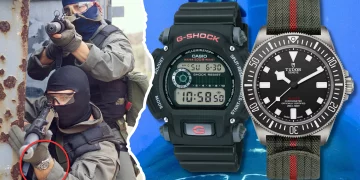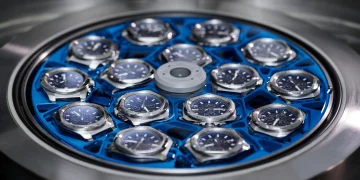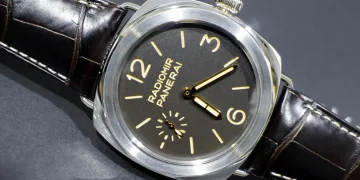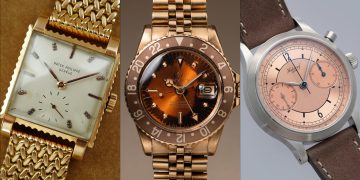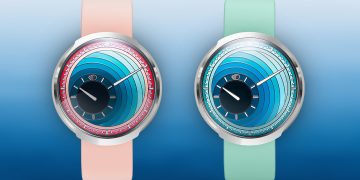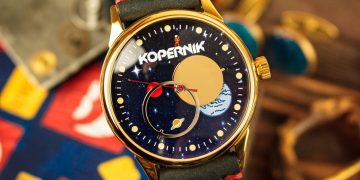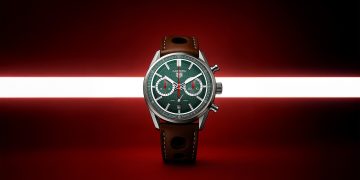When it comes to luxury watches, few brands command the same respect and admiration as Omega and Rolex. The Speedmaster and Submariner, respectively, are two of the most well-known and celebrated timepieces in the watchmaking world. While both are built for durability, precision, and reliability, their maintenance needs are distinctly different due to their unique mechanical movements, design principles, and historical roles.
In this article, we will explore the maintenance processes for both the Omega Speedmaster and Rolex Submariner, focusing on their respective mechanisms, care recommendations, common issues, and the best practices for ensuring they continue to perform at their best over time. We will also compare the ease and cost of maintenance, offering insight into what collectors and watch enthusiasts can expect from each brand.
1. Introduction to the Omega Speedmaster and Rolex Submariner
Before diving into the maintenance requirements, it’s essential to understand the basic technical details of the Omega Speedmaster and Rolex Submariner. Both watches have long histories of success in their respective fields, and they share a reputation for being exceptionally reliable and well-crafted. However, they come from different design philosophies, with the Speedmaster often being associated with space exploration and the Submariner with deep-sea diving.
Omega Speedmaster
- History: Introduced in 1957, the Omega Speedmaster became widely recognized for its involvement in NASA’s Apollo missions, eventually becoming the first watch worn on the Moon in 1969. It has remained a staple of the Omega collection and is one of the most famous chronographs in history.
- Movement: The Speedmaster is powered by the Omega Caliber 1861 (for standard models) or more recent variations, a manual-winding chronograph movement that is known for its precision and reliability.
- Design and Durability: The Speedmaster features a steel case, a tachymeter bezel, and a thick sapphire crystal. It is considered one of the more robust watches in Omega’s collection, with a water resistance rating of 50 meters.
Rolex Submariner
- History: Launched in 1953, the Rolex Submariner is considered the quintessential dive watch. It set the standard for all dive watches, with its robust case, water resistance, and rotating bezel. It has become an iconic symbol of luxury and performance, both on the wrists of professional divers and celebrities.
- Movement: The Submariner is powered by the Rolex Caliber 3235 (or earlier variations such as the 3135 in older models), an automatic mechanical movement that offers exceptional reliability, power reserve, and chronometric precision.
- Design and Durability: With a stainless steel case, ceramic bezel insert, and high-grade stainless steel (904L steel), the Submariner is designed to endure extreme underwater conditions. It offers a water resistance rating of up to 300 meters, making it a formidable tool for professional divers.
2. Maintenance Considerations for the Omega Speedmaster
The Omega Speedmaster is known for its durable and functional design, but like all mechanical watches, it requires regular maintenance to ensure optimal performance. The key factors in maintaining a Speedmaster include movement upkeep, case cleaning, crystal care, and periodic servicing.
Movement Maintenance
- Manual Winding: The Omega Speedmaster features a manual-winding movement. This means that the wearer must wind the watch regularly, ideally every day. Over time, the mainspring in the movement can lose its tension, causing the watch to lose accuracy. Regular winding ensures that the watch remains within acceptable timekeeping limits.
- Servicing: Omega recommends having the Speedmaster serviced every 4-5 years to ensure that the movement remains in good condition. Servicing involves disassembling the watch, cleaning the components, lubricating the movement, and checking for any wear or damage.
- Chronograph Functionality: The chronograph function is one of the key features of the Speedmaster. Over time, the chronograph mechanism can become sluggish or fail to reset properly. This is typically due to wear on the movement’s parts, particularly the chronograph’s pushers or the clutch system. A watchmaker will need to disassemble and clean the chronograph components to restore full functionality.
Case and Crystal Maintenance
- Case Cleaning: The stainless steel case of the Omega Speedmaster is highly resistant to corrosion but can still accumulate dirt, oils, and grime over time. It’s best to clean the case periodically using a soft brush and mild soapy water. Avoid harsh chemicals or abrasive cleaning methods that could damage the finish.
- Crystal Care: The Speedmaster features a sapphire crystal, which is highly resistant to scratches but not immune to them. Over time, small scratches may appear on the surface, especially if the watch is worn in harsh environments. Regularly inspecting the crystal for damage and cleaning it with a microfiber cloth is essential to maintaining clarity.
Water Resistance
While the Omega Speedmaster is water-resistant up to 50 meters, it is not considered a professional diving watch. As a result, it is important to avoid exposing the watch to excessive moisture or submerging it in water. Always ensure the crown is properly screwed down to maintain water resistance.

3. Maintenance Considerations for the Rolex Submariner
The Rolex Submariner, with its automatic movement and superior water resistance, is designed to withstand much harsher conditions than the Speedmaster. However, like any luxury watch, it requires maintenance to ensure it continues to function optimally.
Movement Maintenance
- Automatic Movement: The Rolex Submariner is powered by an automatic movement, meaning it winds itself as long as the watch is worn regularly. However, if the watch is left unworn for an extended period, it will stop. To keep the movement running smoothly, Rolex recommends wearing the watch regularly or using a watch winder to keep the movement active.
- Servicing: Rolex recommends servicing the Submariner every 10 years, though this may vary depending on wear and use. The servicing process involves a complete disassembly of the movement, cleaning of the components, lubrication, and any necessary repairs or replacements. Since the Rolex movement is known for its precision, servicing is usually focused on ensuring the automatic winding system and chronometer rating are functioning correctly.
Case and Bezel Maintenance
- Case Cleaning: The stainless steel used in the Submariner’s case (904L steel) is highly corrosion-resistant and can withstand exposure to saltwater. However, regular cleaning is still necessary to remove oils, salt, and dirt. A gentle scrub with a soft brush and mild soapy water is sufficient for cleaning.
- Bezel Maintenance: The rotating bezel on the Submariner plays a crucial role in timing dives, and its smooth operation is vital for accurate underwater timing. Over time, the bezel can become loose or may not rotate as smoothly. In such cases, the bezel may need to be cleaned or lubricated, and the mechanism should be inspected during servicing.
Crystal and Water Resistance
- Crystal Care: The Submariner features a sapphire crystal, known for its scratch resistance and durability. However, like any sapphire crystal, it can still suffer from deep scratches or fractures. Regularly inspect the crystal, especially after outdoor activities or accidental impacts, and clean it using a microfiber cloth.
- Water Resistance: One of the defining features of the Submariner is its water resistance, rated at up to 300 meters. To ensure this level of protection, it is crucial to have the watch pressure-tested during each service. The seals around the case, crown, and pushers must be in perfect condition to maintain water resistance, and the watch should never be exposed to water if the crown is not fully screwed in.
4. Comparing Maintenance: Omega Speedmaster vs. Rolex Submariner
Service Intervals and Costs
- Omega Speedmaster: The Speedmaster typically requires servicing every 4-5 years, with costs varying depending on the complexity of the work needed (e.g., movement overhaul, chronograph servicing). On average, an Omega Speedmaster service can cost anywhere from $400 to $800, with additional costs if replacement parts are required.
- Rolex Submariner: Rolex recommends servicing the Submariner every 10 years, although many owners prefer to service it more frequently for optimal performance. Rolex’s servicing fees are generally higher, with prices ranging from $600 to $1,200, depending on the extent of the work.
Ease of Maintenance
- Omega Speedmaster: The Speedmaster’s manual-winding chronograph movement makes it relatively simple to service, but the complexity of the chronograph mechanism can lead to more frequent issues, especially with long-term use. While the watch is durable, the maintenance process may be more hands-on due to the manual winding and chronograph complications.
- Rolex Submariner: The Submariner, with its automatic movement, is less likely to need as frequent maintenance, especially if worn regularly. Its automatic winding system and robust design make it relatively low-maintenance compared to the Speedmaster. However, it is essential to ensure that the water resistance is checked regularly, especially for those who frequently dive or engage in water sports.
5. Conclusion: Which Watch is Easier to Maintain?
Both the Omega Speedmaster and Rolex Submariner are exceptional timepieces with proven durability and performance. However, their maintenance needs differ due to the inherent design choices and intended uses of the watches. The Speedmaster requires more frequent attention to its manual-winding movement and chronograph mechanism, while the Submariner is easier to maintain, thanks to its automatic movement and exceptional water resistance.
Ultimately, both watches require regular maintenance to ensure longevity, but the Rolex Submariner may be slightly easier to care for due to its automatic movement and less complex design. However, the Omega Speedmaster, with its rich history and complex chronograph features, offers a more hands-on experience for those who appreciate the finer aspects of watchmaking.
For both, regular servicing by certified professionals ensures their continued accuracy and longevity, and owners should be prepared for the associated costs of maintaining these luxury timepieces.



